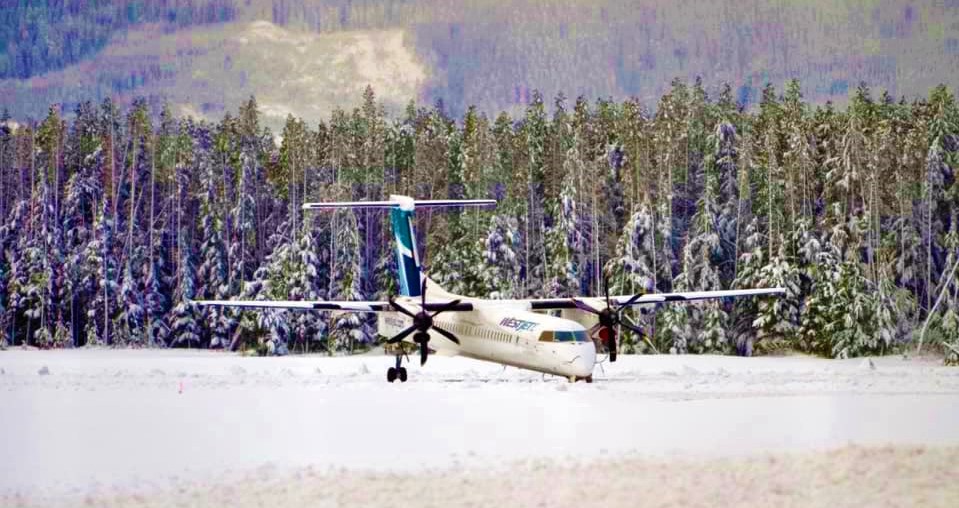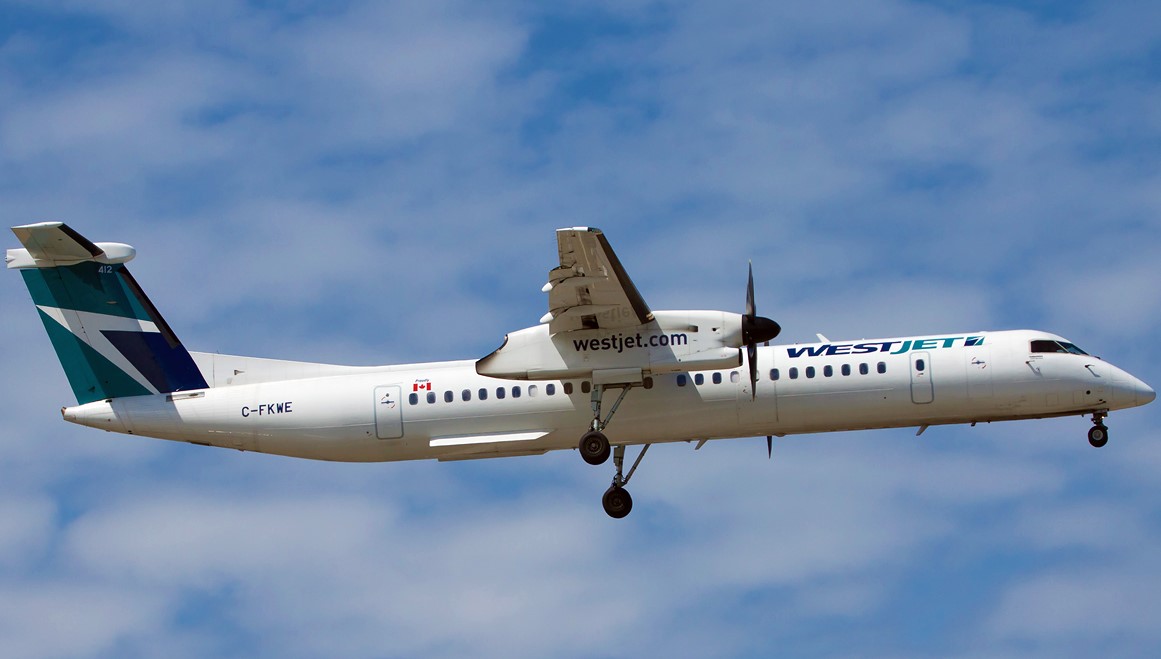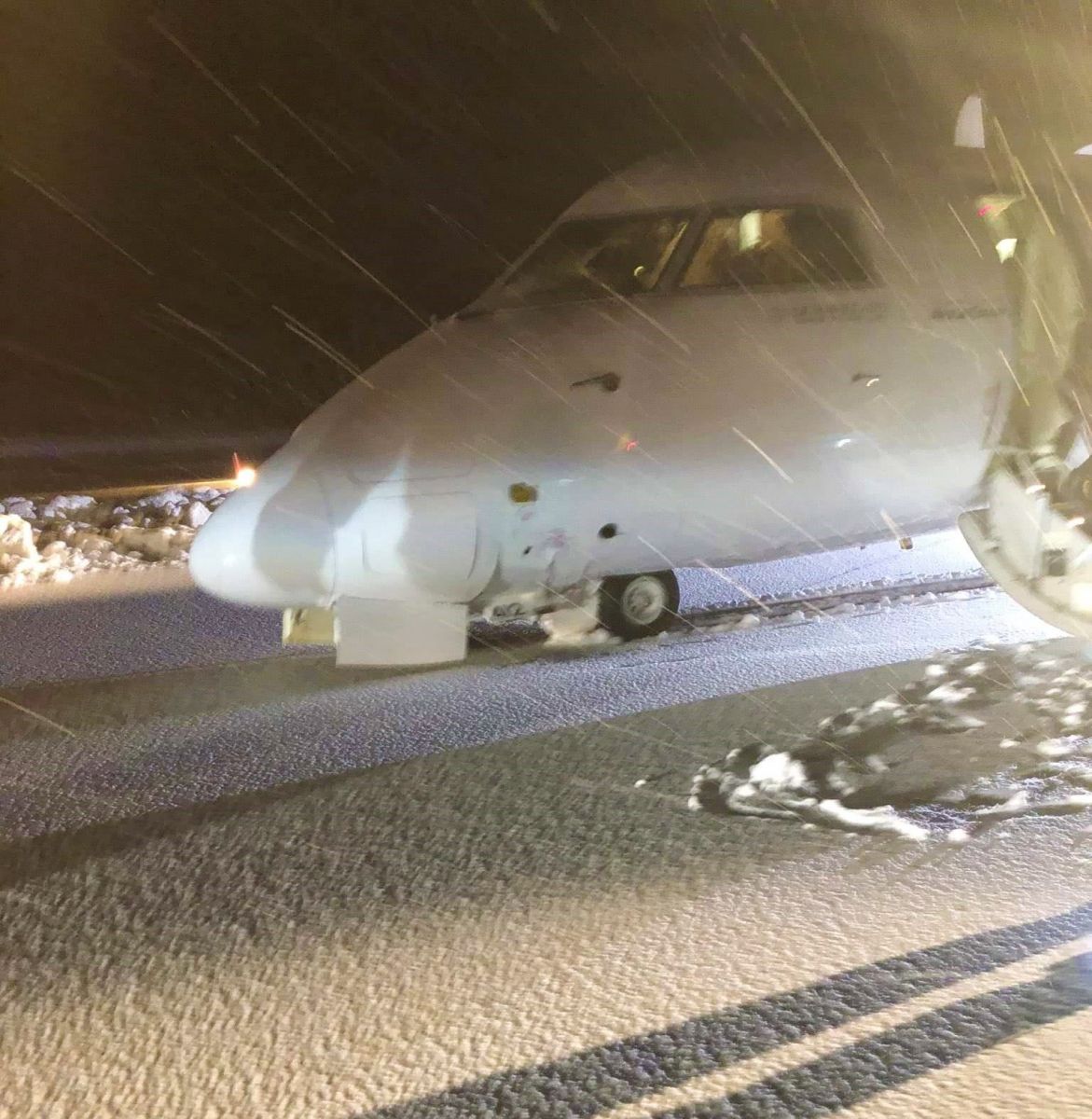


TSB released their Final Report on the 'Westjet Encore DHC-8-400 Nose Landing gear Collapse' concluding the probable causes of the accident on 22nd July 2021 via Investigation Report Number A20P0013.
On 31 January 2020, the WestJet Encore Ltd. De Havilland Aircraft of Canada Ltd. DHC-8- 402 aircraft (registration C-FKWE, serial number 4467) was conducting flight WS3107 from Vancouver International Airport, British Columbia, to Terrace Airport, British Columbia, with 4 crew members and 43 passengers on board.
At 2106 Pacific Standard Time, during the landing roll on Runway 33, the aircraft drifted left from the snow-cleared area of the runway and the left main landing gear came into contact with a windrow.
As a result, the aircraft was pulled to the left and the nose and right main landing gear also came into contact with the windrow. The aircraft travelled through the uncleared portion of the runway and the left main landing gear exited the runway surface, outside of the runway edge lights, travelling for approximately 400 feet before returning to the runway.

During the runway excursion through the windrow and uncleared portion of the runway, the aircraft’s nose landing gear collapsed rearward. After the aircraft came to a stop, the flight crew requested the services of aircraft rescue and fire fighting.
► Fuselage and nose landing gear
During the excursion through the windrow and uncleared portion of the runway, the NLG bay became packed with ice and snow, which caused structural deformation leading to the drag strut release from the trunnions and the shearing of numerous fasteners.
This allowed the NLG strut assembly to rotate aft about the shock strut pivot points. During the accident sequence, the NLG uplock structure was torn from the forward fuselage structure.
As a result of the NLG shock strut assembly rotating rearward into the belly section of the forward fuselage, there was significant damage to several flight control systems installed in the lower forward fuselage (below the cockpit floor) of the aircraft.

There was also significant structural damage to the forward pressure bulkhead, composite nose assembly, cockpit floor structure, and lower forward fuselage skins.
► Propellers
During the excursion through the snow and ice windrows, all 6 blades of the right-hand propeller made contact with a foreign object, likely snow or ice, and the tips of the propeller blades were damaged to varying degrees.

The propeller blade debris damaged the right-hand ice shield and underlying fuselage skins in 2 locations on the right side of the fuselage. No piece of the blades penetrated the aircraft cabin.
► Given the falling snow and the snow-covered runway, there were limited visual cues available to the flight crew, which decreased their ability to accurately judge the aircraft’s lateral position once it was beyond the threshold.
► Snow clearing operations cleared the centre 100 feet of the runway, which resulted in windrows that were approximately 18 inches high along the edges of the cleared area. This reduced the pilot’s lateral manoeuvring room during the landing.
► The aircraft initially touched down 10 feet left of the centreline due to control inputs and variable wind conditions and, while the aircraft was still in a light weight-on-wheels condition, a gust contributed to a further deviation to the left until the left main landing gear came into contact with the windrow.
► As the left main landing gear impacted the windrow, the drag on that landing gear caused the aircraft to pull to the left, causing the nose and right main landing gear to also come into contact with the windrow.
► During the runway excursion, snow and ice became packed in the nose landing gear bay and caused structural deformation. Consequently, the nose landing gear was no longer being held in place and collapsed rearward into the fuselage, causing substantial damage to the aircraft.
There were no injuries. The passengers were transported to the airport terminal by bus approximately 30 minutes after landing.
Report and Pictures : TSB - Canada vide 'AIR TRANSPORTATION SAFETY INVESTIGATION REPORT A20P0013' .
